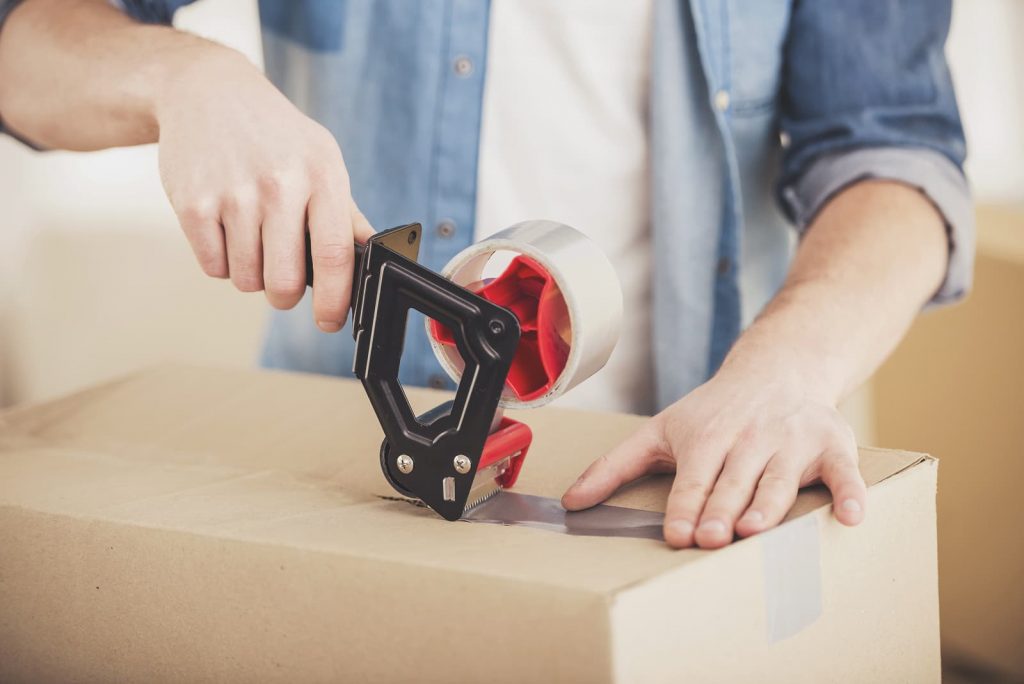Whether you’re moving a personal computer to a new home or moving office computers to a new facility, keep in mind that you’re transporting sensitive electronics. Desktop computers can be especially deceptive. Most computer cases look sturdier than the computer actually is, and while the case offers some protection, you can’t just throw it in a truck and expect a 100 percent-safe trip. Why chance it? Here are a few computer safety tips for anyone making a move.
What Could Possibly Go Wrong?
With any electronic device, you run the risk of breaking sensitive parts if they hit a wall, the floor of a vehicle, or anything else for that matter. And for computer safety, there’s more at risk than simply hitting the floor. Everything inside a computer is a potential projectile. With professionally built computers from major name brands, you’d expect motherboards, video cards, sound cards, power supplies, and various drives to be bolted down properly. Unfortunately, that’s not always the case. A computer sliding around in a car or a moving truck can damage the internals. This, unfortunately, will cause physical damage that requires replacement and not repair. At best, you’ll have to plug in a component that came loose during the move. At worst, you’ll need to spend hundreds on a new motherboard, video card, or processor — which is likely the most expensive component in your computer.

Use the Right Packing Materials For Computer Safety
For comprehensive computer safety, you need to pack it and secure it properly. With good insulation and stabilization, your computer will last longer. Generally speaking, use a box that is significantly larger than your computer to provide plenty of room for cushioning materials like bubble wrap and packing peanuts. With that insulation, a lot of shaking or even slight sliding won’t be much of an issue. Much of the shock will be absorbed by the outer box and the packing materials. If you use a box that is significantly larger than your computer, don’t use it as a shelf for anything else. You don’t want to risk crushing the computer if multiple heavy objects move around on top of the box.
Secure the Internals
Finally, if you’re using a custom or aftermarket computer, make sure everything is secure on the inside. Some people prefer to keep their hard drives or solid state drives (SSDs) loose for easy swapping and diagnostics, but the drives could crack components inside the computer. Although drives can be damaged in transit, they’re actually fairly sturdy and are bigger risks to other components. To keep everything safe, make sure to tighten the securing screws on your components. With motherboards, keep in mind that over tightening is a bad idea. Tightening motherboard screws too much can crack the resin-based board, and the crack can spread.
Moving your computer means performing due diligence the same way you would pay extra attention to anything fragile. Movers have best practices to keep your goods safe, and they can help you better if they know what they’re dealing with ahead of time. If you need advice or help with securing your property, make sure to contact a moving company before your move date.

If The Move Doesn’t Go Smoothly
Did your computer sustain damage despite your best efforts? It might be time to enlist the services of an experienced IT service provider. Don’t worry, Bay Computing & Consulting Services has you covered. We are here to help you with your technology issue when you need us. We will give your home or business computer the full treatment and vastly improve its performance. We offer the very best in IT networking, server support, data recovery, PC repair, virus removal, consulting and more. We can even repair your computer from afar with remote support. For a silent, blazing fast computer, contact us today.